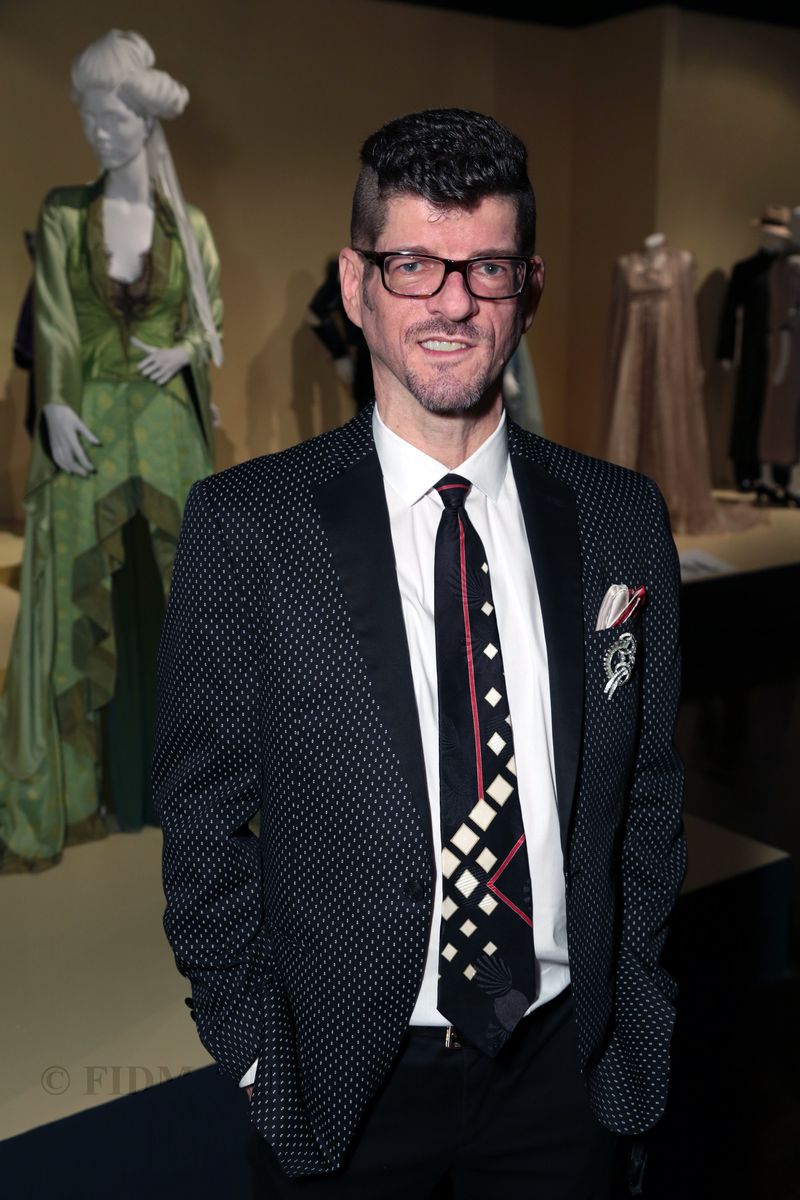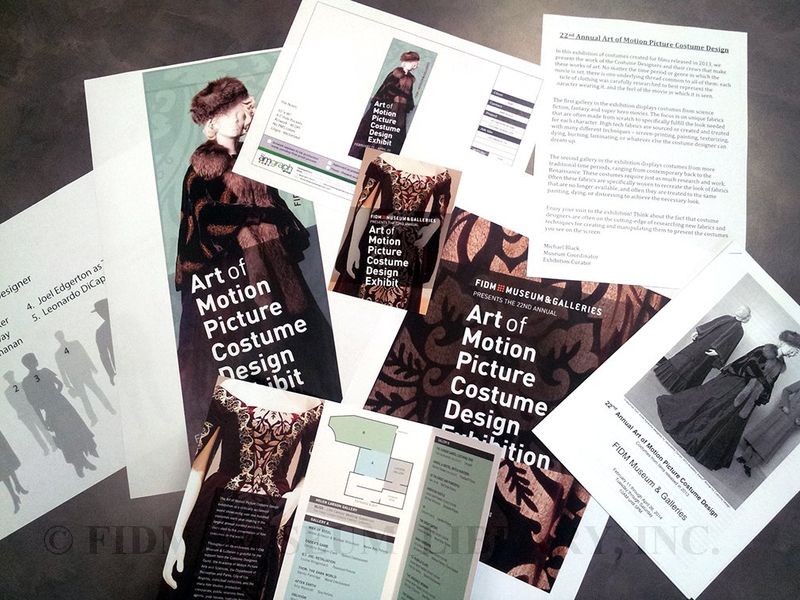The mastermind behind the Annual Art of Motion Picture Costume Design exhibition is Michael Black, FIDM Museum Coordinator. Having worked on this annual exhibition for over 10 years, Mike has a deep understanding of the costume design industry. This knowledge allows us to borrow costumes from film studios, archives, and costume designers. This year's exhibition, the 22nd Annual Art of Motion Picture Costume Design, is open through April 26, 2014.
**********
Describe your position at the FIDM Museum & Galleries. What is a typical day like? Is there a typical day?
When there is an exhibition in the galleries, my typical day starts out with checking any emails/phone calls that came in overnight. Then I will “turn on” the exhibition. This involves letting the Museum Shop personnel into the galleries, making sure all the lighting is turned on and music is playing. I’ll do a walkthrough of the exhibition to make sure none of the mannequins have any issues such as paper wigs coming unstuck or limbs falling off, and I will check for any burned out lights. I also restock any handouts that are available for the exhibition, and make sure the computer is turned on for people wanting to make donations to the Museum.
The rest of my day is spent between answering emails/phone calls, paying Museum bills, researching upcoming films, making arrangements with our Publications Department and/or outside vendors for various printed needs for upcoming exhibitions. I also work with other departments and outside groups when they have events involving the galleries, making sure we are staffed both in the shop and with adequate security guards, and often acting as a liaison between the Museum and caterers and rental companies. Part of my job requires me to keep a calendar of any events that involve the Museum to make sure we don’t have any conflicts, and working with our Museum Registrar, Meghan Hansen, to plan the workflow for installing and de-installing exhibitions in a timely and efficient manner.
 Michael Black, FIDM Museum Coordinator, at the 22nd Annual Art of Motion Picture Costume Design exhibition.
Michael Black, FIDM Museum Coordinator, at the 22nd Annual Art of Motion Picture Costume Design exhibition.
How long have you been with the FIDM Museum? When did you start pulling together the Art of Motion Picture Costume Design Exhibition?
In 2000, I came to Los Angeles to see the 8th Annual Art of Motion Picture Costume Design after seeing a snippet of it in a clip about a man restoring a vintage Hollywood film costume. (I think it might have been costume collector Larry McQueen, and the program was on Turner Movie Classics.) It was then that I decided I wanted to work in “a museum.” Not knowing how to go about that, I enrolled at FIDM to get a Professional Designation in Fashion Design, thinking I could then go on to be a costume designer, and work my way into a museum through that method.
In 2002, fresh diploma in hand, I volunteered to help dress the 10th annual exhibition. Mary Burroughs, FIDM’s Special Events Coordinator, saw me (I had worked for her as a dresser on several fashion shows while I was taking classes), and told me to follow her. The founding Museum Director, Maggie Murray, had just passed away, and the new director, Robert Nelson, was up to his eyeballs in plans to get the exhibition open in time, and was in desperate need of some help. I jumped at the opportunity, having skipped all the in-between steps I thought would be necessary, and began working at the FIDM Museum in February 2002. I would say that the first Hollywood exhibition I curated was in 2005.
 Printed materials for the Art of Motion Picture Costume Design exhibition. Mike works closely with our publications department to create these materials.
Printed materials for the Art of Motion Picture Costume Design exhibition. Mike works closely with our publications department to create these materials.
The Annual Art of Motion Picture Costume Design Exhibition takes up a lot of your time. Describe your involvement in this. How do you choose the costumes? Do you have any behind the scenes/seams stories?
Planning for the exhibition begins each January when new films start to come out in the theaters. Throughout the year, I keep an eye out on what films have been released, and amass a list of potential candidates for our exhibition that often has over 60 titles on it. My selection process is multi-faceted, and involves lots of input from other people.
My overall plan is to show the widest possible selection of time periods, with the most interesting costumes available while managing to attain costumes from the five films that will be nominated for Best Picture Oscars®.
At first, I will scan IMDb.com to see what films will be released and start making my list. We only show films that are eligible for an Academy Award® nomination, which means that it must show in a public venue in Los Angeles County for at least one week during the calendar year. From there, I will look to see what films our FIDM graduates might have opening, and then what films are opening from costume designers we have shown in the past. As far as picking specific costumes, it’s very unusual for me to be able to say “I’d like this" costume and be able to get it. We usually get what the lender has available, or what the costume designer would like to feature.
My own bias somewhat meshes with the Academy of Motion Picture Arts and Sciences in that I do enjoy movies with big dresses, and lots of sparkle, but I also like science fiction. I also look for films that will be of interest to our students and to the general public. I’ve had to get lots of education on what makes good contemporary costume, because according to all my sources, if it’s well done, you shouldn’t notice it – making it a bit counter intuitive to showing in a museum. (We do show more contemporary costumes in our annual Outstanding Art of Television Costume Design exhibitions.)
I don’t really have any behind the seams stories, because the one thing I don’t do is actually handle the costumes, which is probably wise, as there are lots that I would want to try on.
What is your favorite aspect of the job?
My favorite aspect is being able to see the costumes in real life. The amount of workmanship and the details and tricks that go into constructing them are astounding.
What do you think the future holds for the FIDM Museum & Galleries?
I would like to hope that with more in-house exhibitions we will be able to expand our audience, while maintaining what makes us so incredibly unique: the largest, longest running, annual exhibition of film costumes in the world.

